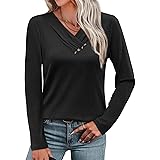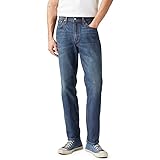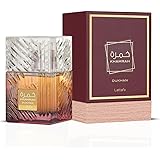With the global fashion industry reportedly contributing approximately 10% of worldwide carbon emissions and consuming vast amounts of water, the urgency for more sustainable practices is becoming increasingly clear. Every second, it is estimated that a full garbage truck equivalent of textiles is landfilled or incinerated, highlighting a significant environmental challenge. The video above offers practical, actionable tips for navigating this complex landscape, providing an excellent starting point for anyone looking to reduce their environmental footprint within the fashion sector. This article expands upon those insights, delving deeper into the ‘why’ and ‘how’ of adopting a more conscious wardrobe.
Understanding the Environmental Cost of Conventional Fashion
The allure of new trends and low prices, often associated with fast fashion, frequently overshadows its substantial environmental and ethical costs. These rapid production cycles lead to immense waste, pollution, and often, exploitative labor conditions. A considerable amount of clothing, for instance, is produced using materials with a high environmental burden, such as conventional cotton, which demands significant water and pesticide use.
The Hidden Impact of Production
Material choices are observed to have a profound impact. While conventional cotton production can require up to 2,700 liters of water for a single t-shirt, organic cotton cultivation is generally known for its reduced water consumption and avoidance of harmful chemicals. Furthermore, synthetic materials like polyester and nylon are widely utilized in clothing, but these fabrics are derivatives of fossil fuels. Microplastics, released into waterways during washing, are also shed by these synthetic garments, contributing to ocean pollution; estimates suggest that washing clothes releases 500,000 tons of microfibers into the ocean annually.
Embracing Circularity: From Wardrobe to World
A fundamental shift in perspective is often encouraged: moving away from a linear ‘take-make-dispose’ model towards a circular one. This approach prioritizes keeping resources in use for as long as possible, extending the life cycle of garments, and minimizing waste. Practices such as buying second-hand or repairing items directly contribute to this circular economy.
The Power of Second-Hand and Swapping
Purchasing pre-loved clothing, whether from second-hand stores, thrift shops, or online marketplaces, is recognized as a highly effective way to reduce fashion’s environmental impact. It is indicated that buying one used item can reduce its carbon footprint by 82%. Moreover, clothing swaps with friends or community groups provide an engaging way to refresh a wardrobe without financial cost or new production. Renting outfits for special occasions is also becoming a popular alternative, allowing access to diverse styles without committing to a full purchase and subsequent storage.
Repair, Repurpose, Recycle
Instead of discarding garments at the first sign of damage, repair is widely recommended. Learning basic sewing skills, for example, allows for simple mends, extending clothing life significantly. When garments are truly beyond repair, repurposing old textiles for household use or upcycling them into new items can be explored. Finally, for items that cannot be donated or repurposed, textile recycling programs should be sought out, though it is important to note that less than 1% of clothing is recycled into new garments globally.
Mindful Consumption: Quality Over Quantity
A cornerstone of sustainable fashion is the principle of buying fewer, higher-quality items that are designed to last. This contrasts sharply with the impulse buying often fostered by fast fashion trends. Investing in timeless, versatile pieces that can be mixed and matched is a key strategy for building a resilient and sustainable wardrobe.
Decoding Labels: Certifications and Materials
Consumers are increasingly encouraged to read clothing labels carefully. Certifications like GOTS (Global Organic Textile Standard) provide assurance that textiles are produced organically and ethically. The Bluesign® system focuses on reducing the environmental impact of textile production across the entire supply chain. Fair Trade certifications ensure that workers are paid fairly and work in safe conditions. Conversely, an understanding of materials is also crucial; opting for biodegradable fabrics such as linen or hemp is often preferred over mixed fibers, which can be challenging to recycle due to their complex composition.
Ethical Practices and Brand Transparency
Supporting brands that prioritize ethical labor practices and maintain transparent supply chains is considered essential. This ensures that the people involved in the production of clothing are treated fairly and work in safe environments, moving beyond merely environmental concerns to encompass social responsibility.
Beyond the Label: Researching Brands
While certifications offer a level of assurance, a brand’s overall commitment to sustainability often requires deeper investigation. Researching a fashion brand’s environmental policies, labor practices, and supply chain transparency can provide valuable insights. Many companies now publish detailed sustainability reports, allowing consumers to make more informed decisions about where their money is spent. Supporting local fashion designers and artisans is also a way to invest in unique, often handmade pieces, while minimizing the carbon footprint associated with global shipping.
Everyday Sustainable Habits at Home
The journey towards sustainable fashion does not end at the point of purchase; how clothes are cared for significantly impacts their longevity and environmental footprint. Simple changes in laundry routines can lead to considerable energy and water savings.
Eco-Friendly Laundry Care
Washing clothes in cold water is a straightforward method for saving energy, as most of the energy consumed by washing machines is used for heating water. Furthermore, air drying clothes instead of using an energy-intensive dryer is another impactful habit. Avoiding over-washing garments is also advised, as frequent washing can cause wear and tear, reducing a garment’s lifespan. Utilizing eco-friendly laundry detergents, which are often biodegradable and free from harsh chemicals, further supports environmental protection.
The cumulative effect of individual choices in sustainable fashion is profound. By adopting practices such as supporting brands that utilize organic cotton, reducing overall consumption, and extending the life of existing garments, a significant positive impact can be made. Continual learning about certifications and the environmental footprint of clothing production empowers consumers to make increasingly responsible decisions, fostering a truly sustainable fashion ecosystem.











